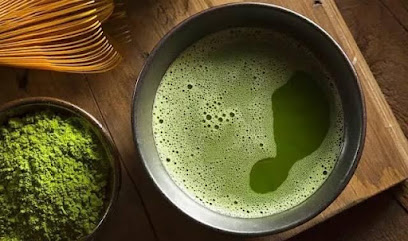Matcha Green Tea
Green tea was originally consumed in Korea, Japan and China but has become popular worldwide in recent years due to its many health benefits including weight loss and high levels of antioxidants. Like all other teas, green tea comes from the camellia sinensis plant but the difference derives from how the leaves are processed. Green tea leaves are used either fresh or withered, lightly heated or steamed. Fresh green tea leaves generally has a light, fresh and grassy taste. Green tea is not oxidised. If you're starting out, it's always better to start with loose leaf green tea as this attunes your taste to quality.
Tea Processing
Types of Green Tea
Senca: Popular Japanese green tea, which is savoury, grassy and slightly bitter with hints of melon/summer fruit and pine.
Gyokuro or Jade Dew Tea: Fuller taste, savoury flavour similar to seaweed or soup stock from Japan.
Houjicha Green Tea: A unique Japanese tea that is produced by roasting senca or bancha over charcoal. The brew is a reddish-brown with caramel and charcoal aroma. Suitable for children due to low caffeine content. Houjicha makes a refreshing green tea during the summer.
Matcha: A finely grounded Tenca, matcha is a strong tea which is full bodied. The taste is astringent, grassy vegetal initially which matures into a smooth lingering sweetness. Matcha is rich nutritions. It is whisked into hot water rather than steeped. It’s a Japanese tea with many health benefits.
Funmatsucha: Cheap and bitter with additional antioxidant.
Konacha: It is made up of small filtered leaves and buds filtered out during the production of Gyokuro and Sencha. A powered tea that has an intense green colour and strong flavour which is astringent and bitter. It is cheaper than sencha or gyokuro since its make from the broken leaves but the chemical component is the same therefore it has the same health benefits. It is also roasted to make Houjikonacha(roasted powered tea) which dilutes bitterness and gives it a roasted flavour and aroma.
Shincha: The tea has a bitter flavour which is due to high amino acids, lack of catechin and caffeine.
Fukamushicha: A rich flavour tea, which is due to a combination of several teas, namely Sencha, Gyokuro, Kabusecha and Bancha. It is made from the second harvest of sencha using leaves, upper arm, and larger leaves discarded during the senca process. With each subsequent harvest, the leaves become tougher, June (nibancha), August (sanbancha) and October (yonbancha). More astringent and less fragrant, fukamushicha is perfect after a heavy meal. Higher grade bancha is called senryu.
Kukicha: It is made from twigs, stems, and stalks remnants from the gyokuro and sencha harvest. Slightly roasted and a bit more oxidised than mostgreen teas, which gives the tea a nutty taste with a round, thick flavour and a yellow brew instead of green.
Longjing or Dragon Well: Hand-roasted full-bodied tea from China that has a mellow, sweet, nutty flavour, vegetal undertones and hints of chestnut and sweet pea.
Gunpower Green Tea or Zhu Cha or Pearl Teas: A Chinese green tea, the leaves are rolled into pellets during processing. The brew is bold with a smoky flavour and pleasing oaky note.
Herbs that can be added to green tea for cooling effect:
· Chrysanthemum flower
· Chinese wolfberry which is believed to nourish the yin
· Citrus peel because it regulates the intestines
· Mint
· Balloon flower
· Ginger
Green tea health benefits
Green tea has natural nutrients which rejuvenates skin and cleanses the body. Green tea boost energy and improves metabolism.
This tea is good to drink before and after exercise to awaken and rejuvenate the body.
Gyokuro retains large amounts of caffeine and chlorophyll, because of how it’s processed, which stimulates the brain and nervous system, maintains healthy skin and tissue.
Vitamin C found in green tea treats the common cold and boosting the immune system, which makes green tea perfect for fighting off a cold during the winter months.
Other benefits include:
• Anti-bacterial and anti-virus properties
• Regulates cholesterol and high blood pressure
• Kills bacteria in the mouth and intestines
• Contains catechins and polysaccharides which lowers blood sugar
• Improves blood flow
For a beginners guide to the other types of tea, their health benefits and flavours, read more here.




Comments
Post a Comment